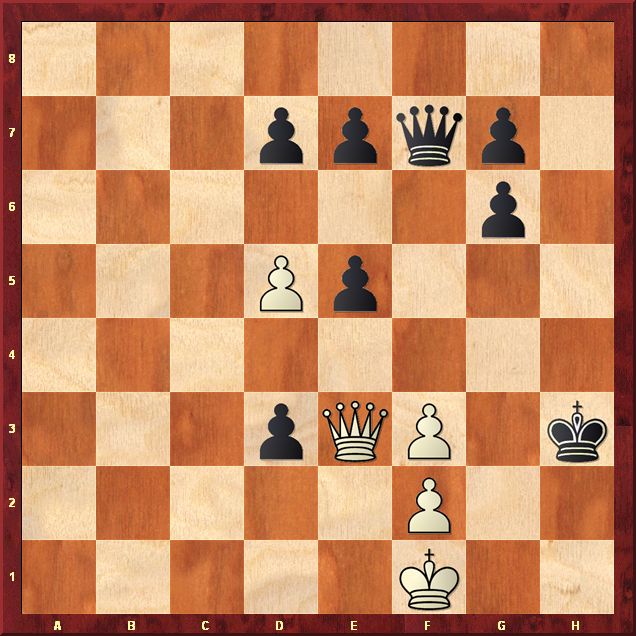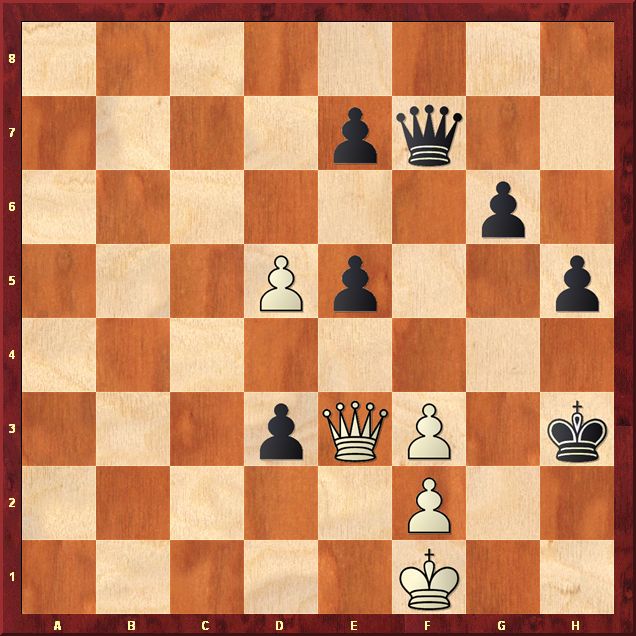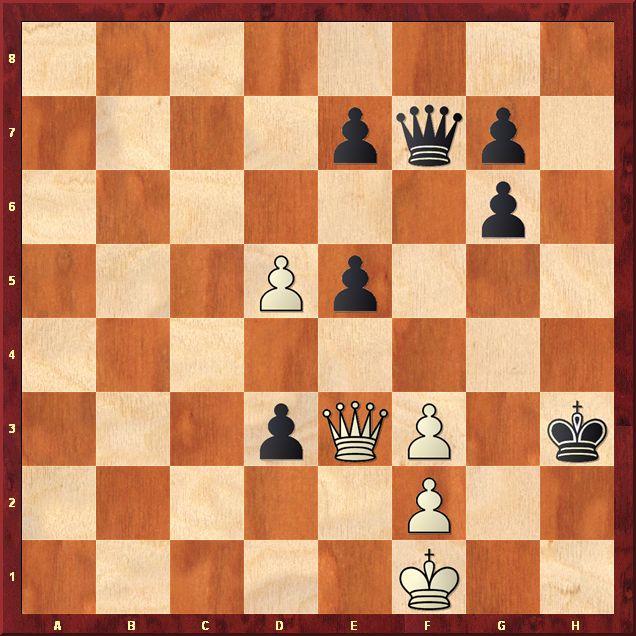How to Cook in Chess
Actually, "to cook" in chess has nothing to do with culinary pleasures. It is a dreaded word chess composers don't want to hear. A chess composition is cooked when there is a different solution unintended by the composer -- a dual solution. But a composition can be also cooked when someone creates a sound problem or study from an unsound work and eliminates the dual solution. You can also have it both ways as our story shows.
Last year we published a chess study composed by Ladislav Prokes and Oldrich Duras, but as pointed out by Prof. Noam Elkies, the study was "cooked." Recently, we learned that a Slovakian player, Ivan Novak, discovered the same dual solution already in 2008. Both Elkies and Novak composed new sound versions of Prokes's study, removing the black pawns and eliminating the original solution. But prof. Elkies took it further: he resurrected Prokes's solution, kept all pawns on the board and just moved the white king one square. His elegant creation is published here for the first time.
Here is the original Prokes/Duras version. The white queen chases the black king counter clockwise around the board and creates a mating net with a quiet pawn move. But there is a problem....

1.f4+ Kg4 2.Qg3+ Kf5 White uses the mill to get rid of the pawn on e5. 3.Qg5+ Ke4 4.Qxe5+ Kf3 5.Qe3+ Kg4 6.Qg3+ Kf5 Without the black pawn on e5, white has time for a quiet move, threatening mate. 7.f3! (However, both Ivo Novak and Noam Elkies discovered a dual solution: 7.Qxd3+ Kf6 8.Qc3+ Kf5 9.Qe5+ Kg4 10.Qg5+ Kf3 11.Qg2+ Kxf4 12.Qg3+ Ke4 13.Qe3+ Kxd5 [13...Kf5 14.Qf3+ wins.] 14.Qb3+ wins.) 7...Qxd5 (7...Qf6 8.Qg4 mate.) 8.Qg5+ Ke6 9.Qxg6 mate.
By moving the black pawn from d7 to h5 and removing the pawn on g7 from the original work, Elkies was able to swing the windmill in the opposite direction as well:

1.f4+ Kg4 2.Qg3+ Kf5 3.Qg5+ Ke4 4.Qxe5+ Kf3 5.Qe3+ Kg4 6.Qg3+ Kf5 7.Qxd3+! (Preparing to spin the windmill the other way.) 7...Kg4 (After 7...Kxf4 white wins the black queen either with 8.Qg3+ Ke4 9.Qe3+ Kxd5 10.Qb3+; or with 8.Qe3+ Kg4 9.Qg3+ Kf5 10.Qf3+. Trying to escape with 7...Kf6 8.Qc3+ transposes to the main line two moves early.) 8.Qg3+ Kf5 9.Qh3+! Ke4 (Again 9...Kf6 10.Qc3+ Kf5 [On 10...e5 11.Qxe5 mates.] 11.Qe5+ transposes to the main line.) 10.Qe3+ Kf5 (After 10...Kxd5 11.Qb3+ wins) 11.Qe5+ Kg4 12.Qg5+ Kf3 13.Qg2+! Kxf4 14.Qg3+ Ke4 (On 14...Kf5 15.Qf3+ wins.) 15.Qe3+ Kxd5 16.Qb3+ wins.
In 2008 in Bratislava, a former Slovakian champion, Ivan Novak, decided to solve a collection of 623 Prokes's studies. It was a formidable task because Novak could not use his sight. He is legally blind. When he came across the Prokes/Duras study, he solved it the same way as Noam Elkies did two years later. He didn't consider Prokes's 7.f3 and came up with 7.Qxd3+. To eliminate Prokes's version, Novak removed the black d-pawn and swang the windmill in two directions.
His idea was published in the Pravda newspaper.

1.f4+ Kg4 2.Qg3+ Kf5 3.Qg5+ Ke4 4.Qxe5+ Kf3 5.Qe3+ Kg4 6.Qg3+ Kf5 7.Qxd3+! [The Prokes/Duras solution 7.f3? does not work because of 7...Qxd5 8.Qg5+ Ke6 9.Qxg6+ Kd7 and the black king escapes.] 7...Kf6 8.Qc3+ Kf5 9.Qe5+ Kg4 10.Qg5+ Kf3 11.Qg2+! Kxf4 12.Qg3+ Ke4 13.Qe3+ Kxd5 [13...Kf5 14.Qf3+ wins] 14.Qb3+ wins.
The Slovakian GM Jano Plachetka, who pointed out Novak's work, asked an interesting question: Is it possible to save Prokes's original solution?
Prof. Elkies had the answer before the question was asked. He did it simply and elegantly by moving the white king one square to the right, from f1 to g1, creating another Huffington Post original study.

1.f4+ Kg4 2.Qg3+ Kf5 3.Qg5+ Ke4 4.Qxe5+ Kf3 5.Qe3+ Kg4 6.Qg3+ Kf5 7.f3! (7.Qxd3+? doesn't work now because the black king escapes after a precise defense 7...Kf6! 8.Qc3+ Kf5 9.Qe5+ Kg4 10.Qg5+ Kf3 11.Qg2+ Ke2! and white can't win.) 7...Qxd5 8.Qg5+ Ke6 9.Qxg6 mate.
Note that in the replay windows below you can click either on the arrows under the diagram or on the notation to follow the game.
No comments:
Post a Comment